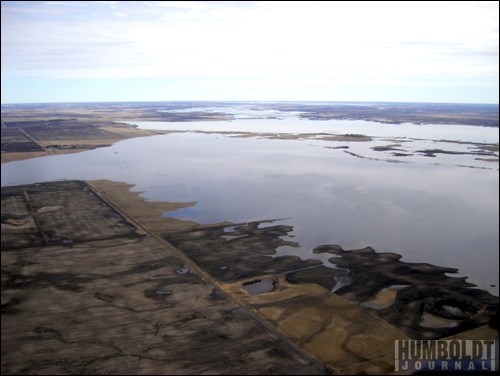It's still pretty wet out there.
The snow is now gone, but water is continuing to move in the Humboldt region.
"We're high," said Dwayne Rowlett of the Saskatchewan Watershed Authority on May 9 when asked about the general water level in this region.
Lenore Lake has reached record levels, up about eight centimetres or three inches from the high last year, reported Rowlett.
Water moving into that lake is from runoff, it was noted.
And the level of that lake is continuing to rise.
Over at Waldsea Lake, calculations based on the SWA's measurements taken on April 29, showed that the lake is expected to be about 17.3 feet higher this year than in 2010. But water was still moving at that point, Rowlett noted, so it could still go up a few more inches above 17 feet, but it won't go up by a huge amount again.
The level of Waldsea is getting close to equalizing with both Deadmoose and Houghton lakes at this point, Rowlett noted.
"All three lakes will be joined," Rowlett said, by the time all is said and done. It will be one big lake.
Looking at aerial photos taken last week of the area, it is very clear that is where these three lakes are heading. Ed Brockmeyer took the photos from his Ultralight, and while the three lakes are still somewhat distinct, they are coming together.
"We're still in a wet cycle. We have been since 2006-07," Rowlett noted. "We just hope the Environment Canada predictions of a hot summer comes through."
To the east, around Quill Lake and Wynyard, Big and Little Quill Lakes continue to rise although inflows are dropping, notes the Saskfloods website.
As these basins have no outlet, water will continue to rise and water will continue to rise and reach elevations not seen since the 1920s over the next few weeks.
Water is still running from Little Quill Lake, through Mud Lake in between and into Big Quill Lake, and is covering fields and pastureland between the lakes like many have never seen before.
Further to the east, Fishing Lake fell two centimetres between May 8-9 and was sitting nine centimetres lower than its peak level. Flood protection works are protecting the communities.




